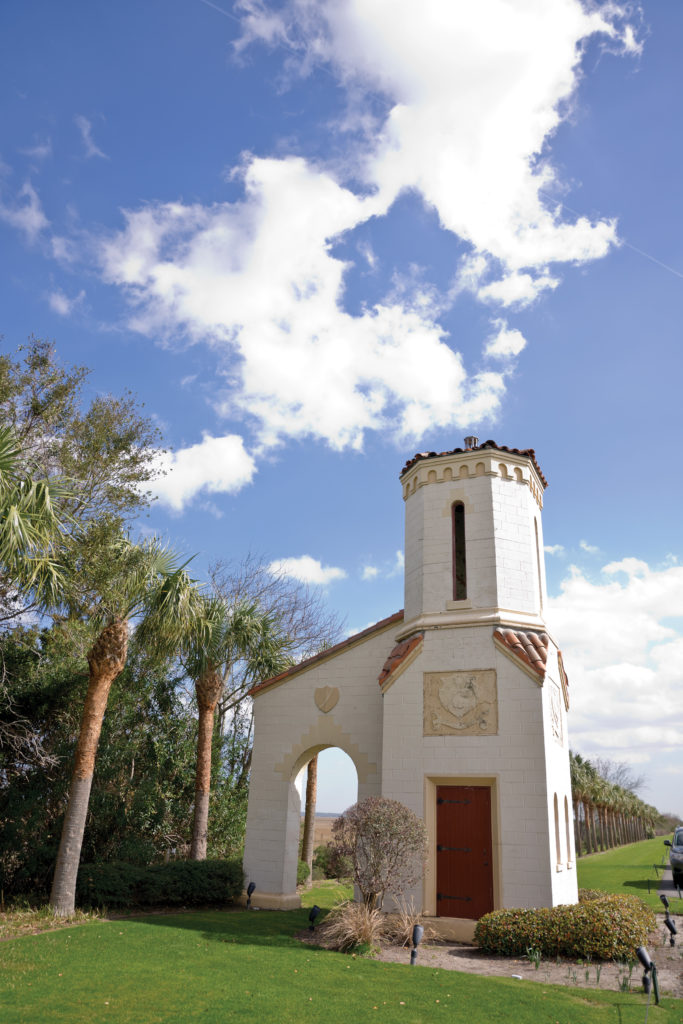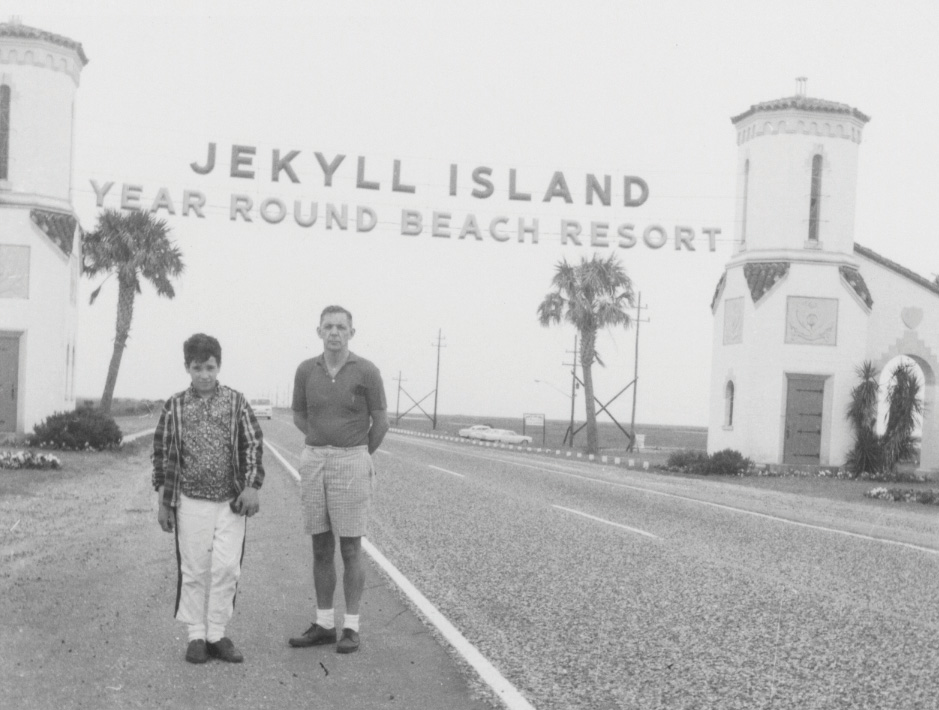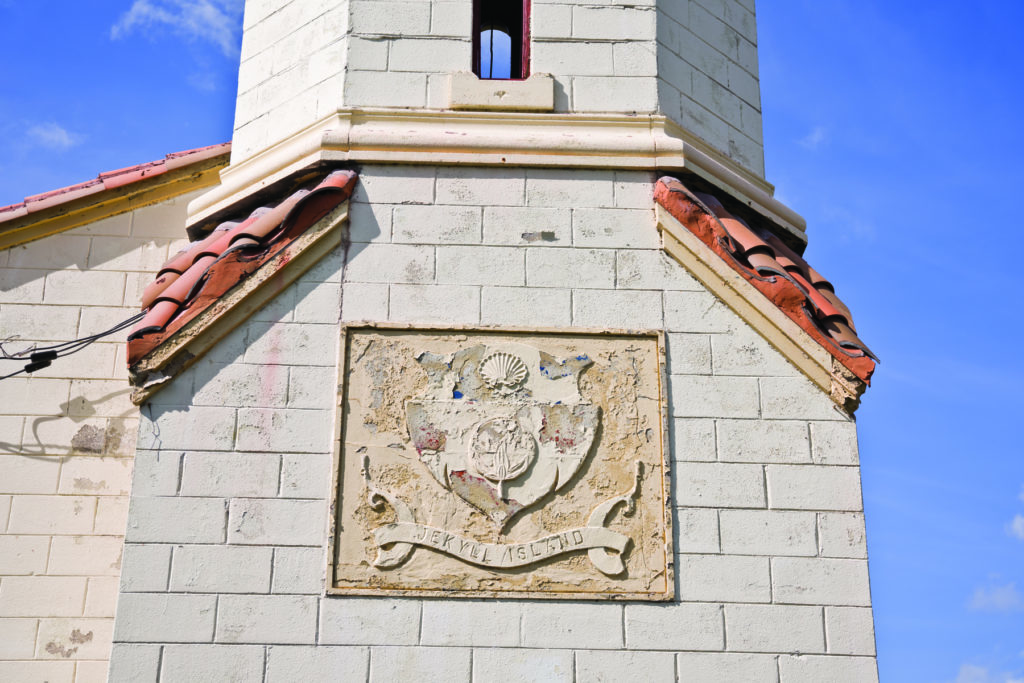The welcoming landmark is a nod to an enduring architectural myth
By Rebecca Burns

As they pass the ornate Spanish-style entrance towers on the causeway, many visitors to Jekyll Island assume they are glimpsing a century-old monument, possibly even a vestige of the island’s pre–Revolutionary War history.
Not quite.
The gates were erected in 1958 during the heyday of the state’s efforts to transform the former billionaires’ retreat into a public paradise. Constructed of concrete block and stone, the gates might visually hark back to Spanish missions, but they are in fact “as fifties as fifties can be,” says Taylor Davis, historic preservationist for the Jekyll Island Authority.
While Spanish missions indeed operated on the island prior to the arrival of English colonists, no ruins of that era remain. Visitors in the early 1900s erroneously assumed some of the tabby structures were remnants of the missions, a myth reinforced in news accounts of the time and perpetuated, in some cases, into present day. Spanish-style buildings with tiled roofs and stucco walls were erected on Jekyll in the 1920s and 1930s in a sentimental—if historically inaccurate—nod to that legend.

In the 1950s and 1960s, cables strung between the gates conveyed a block-letter greeting to arriving vacationers. One of the gates also housed a more prosaic welcome amenity: restrooms. Today, the towers are framed by rows of cabbage palms, and their signature design feature, bas-relief replicas of the Jekyll club seal, is somewhat worse for wear. The emblem—a shield bearing a scallop shell and cotton boll—originated in the 1930s and eventually became the logo of the Jekyll Island Authority before falling into disuse. Davis will be part of a team that will restore the seals, a project that is still in planning stages and will require some delicacy.
Researchers at the University of Georgia recently learned that travelers pick destinations based on how photogenic—or Instagram-ready—they are. While Jekyll’s entrance gates may have lost some Instagram appeal when the retro signage went down, they do attract fans. Davis, who drives through the gates to and from work every day, says he regularly spots people pulled over and posing for photos. For him, it’s an understandable impulse. “The gates are just cool,” he says. “They really serve as Jekyll’s handshake to the rest of the world.”

Did You Know?
When the state took over Jekyll in the late 1950s, many of the seemingly historic elements added to the island—including the entrance gates and a boardwalk—were constructed from concrete. In a cost-cutting effort, the Jekyll Island Authority opened its own concrete factory, saving some $50,000 in the process, according to a 1958 Atlanta Constitution report.


